It’s no secret that SEO is one of the most important aspects of modern marketing. A good SEO plan helps you get better online visibility, giving you more chances to present your products or services to potential customers. That’s why it’s no surprise seeing so many companies try to rank higher in search results these days.
If you’re here, maybe a competitor of yours keeps beating you in the SEO game. Would you like to know what you can do to finally get ahead and stay there? Worry no more because in this blog post, we’ll discuss how you can beat a competitor’s SEO fair and square!
Index:
– Knowing What Your Competitors are Doing
– Conduct Comprehensive Keyword Research
– Optimize Your Website for Those Keywords
– Create a Mobile-Friendly Website
– Focus on Creating 10x Content
– Create Content That’s Error-Free
– Use Header Tags [Like This One] to Make Content Easier to Read
– Write Content That Gets Shared
– Make It Easier to Save or Bookmark Your Content
– Include Infographics and Other Visual Elements
– Publish Content on a Regular Basis
– Optimize Individual Pages for Higher Rankings
Knowing What Your Competitors are Doing
The first thing you need to do is identify what your competitors are doing. This can be done with a variety of tools such as SEMrush, Ahrefs, and Moz. Simply put in the URL of your competitor’s website and these tools will show you all the SEO tactics they’re using including their backlinks, keywords, and organic traffic.

Once you have an idea of what your competitors are up to, it’ll be easier for you to come up with a strategy on how to beat them.
Conduct Comprehensive Keyword Research
Conducting comprehensive keyword research is another crucial SEO strategy that you shouldn’t miss. This will allow you to identify which keywords your competitors are targeting and which ones would be the best for your website as well.

Keyword competition tools such as KWFinder, LongTailPro, and Keyword Tool Pro can give you data on the search volume trends of different keywords. Use this data to determine whether a particular keyword is worth targeting or not. Additionally, you’ll probably find a few keywords being targeted by your competitors that 3rd party tools aren’t picking up. You’ll be able to target those as well and get a share of traffic from those keywords.
One more thing to note is that even if a keyword doesn’t show up as having any search volume, you shouldn’t rule it out completely. Many times the tools we use show zero or low search volume, but we’ve found that ranking a page for those terms often does lead to valuable traffic. It just goes to show that no single SEO tool is perfect and you need to test everything you do before drawing a conclusion.
Optimize Your Website for Those Keywords
Once you’ve identified the right keywords, it’s time to optimize your website for them. This includes using those keywords in your website’s title, meta description, and throughout the content. You can also use them as the focus of your blog posts and even create separate pages for them.

Just be sure to plan your content strategy carefully so that your pages are unique. Otherwise, you may end up competing with yourself if you have pages that are too closely related to each other.
Create a Mobile-Friendly Website
In addition to optimizing your website for keywords, you should also make sure that your website is mobile-friendly. The reason is pretty simple – the majority of internet users are now using their phones to search for information online.

Regardless of how valuable your content is, if users are having a hard time accessing your website on mobile phones, most won’t spend enough time to look through what you have to offer.
You can use Google’s Mobile-Friendly Test tool to check if your website meets the requirements or not.
Create Better Content
One of the most common reasons websites lose to their competitors is because they have inferior content. If you want to rank higher than them, then you need to create better and more valuable content. This doesn’t mean just writing longer articles but also making sure that your content is well-researched, relevant, and engaging.

You can also use tools like BuzzSumo to see the most popular content on the internet. This can give you an idea of what type of content is resonating with your audience and help you create something similar or even better.
Create Evergreen Content
In addition to creating better content, you should also aim to create evergreen content. This type of content is relevant and valuable even months or years after it’s been published. It doesn’t contain any information that’s time-sensitive and therefore can be referenced by other websites to earn you links.
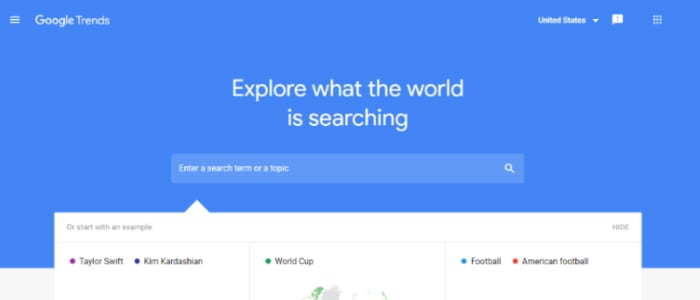
You can use free tools like Google Trends to see which topics are trending now and those that have been gaining traction for a while already. Create content around these evergreen keywords and start ranking for them. This way your content will remain relevant for the long term.
Focus on Creating 10x Content
In addition to creating better content, you should also focus on creating “ten times” content. According to Brian Dean, this is content that’s so valuable and well-researched that it’s much better than anything else currently available online. Moreover, it’s a form of content that is not that easy to replicate because it’s longer, more comprehensive, and more in-depth.
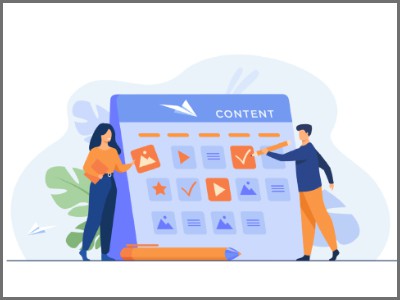
You can use tools like the Content Experience Tool from Moz to help you come up with ideas for content that’s truly exceptional.
Word Count, Counts
This is another reason why some websites lose to their competitors. Some of them are producing extremely long content that’s hard for users to go through in its entirety. This especially holds true if the topic isn’t relevant or valuable enough for people to engage with it for a longer period of time.
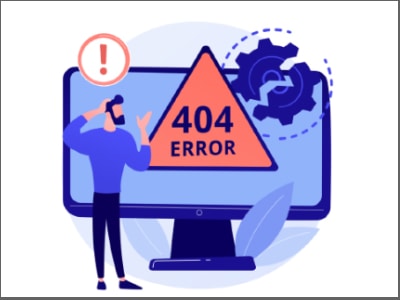
It’s best to have a sufficient word count depending on the topic. However, it doesn’t necessarily mean that you should only create short and on-point content. Instead, it needs to be enough to cover the topic in detail without making the content draggy.
Remember to always aim for quality over quantity. But go beyond that and do a little competitor research. Type your keyword you want to rank for in Google and take a look at the top 10 pages. Check their word count and find out what the average is. Since that number is what Google’s currently rewarding, you can rest assured that the average you come up with is the ideal word count for that search term.
Create Content That’s Error-Free
This is something that a lot of website owners tend to overlook. However, if you want your website to rank higher than your competitors, then you need to make sure that all your content is error-free. This means checking for grammar mistakes, typos, and factual inaccuracies.

You can use tools like Grammarly or the Hemingway App to help you edit and proofread your content. However, it’s best if you can also get another set of eyes on your article before publishing it.
Run a Plagiarism Check
You should also run a plagiarism check on your content to make sure that it’s original. If you’re using other people’s work in your articles, then they need to be properly cited and referenced from the source. Otherwise, you risk getting hit with a DMCA Takedown notice and possible legal troubles.

Use Header Tags [Like This One] to Make Content Easier to Read
Header tags can also help your content rank higher. This is because it makes the information easier for users and search engines to read, process, and understand. You should use header tags sparingly but make sure that you have them in place so as not to break any rules from Google’s Quality Guidelines.

Have Skimmable Formattin
People are busy these days and don’t always have time to read through your articles completely. In addition to using header tags, you should also help them out by using formatting that makes your content easier to skim. This means breaking up the text into small paragraphs, using images and videos, and adding lists whenever possible.
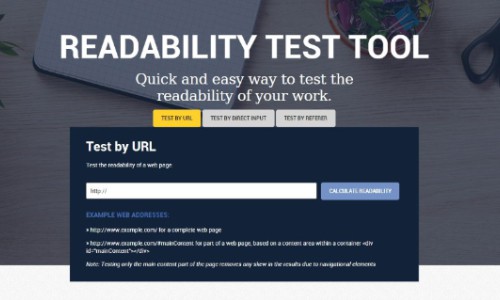
You can also use tools like the Readability Test Tool from SEOmoz to check the level of difficulty users might have reading your content.
Write Content That Gets Shared
You should also focus on creating shareable content if you want to beat your competitors in the SERPs. This means focusing on topics that are relevant and interesting for users so they’ll be more inclined to share with friends and followers, as well as linking back to your website.

Full Stop.
You might have heard this before and if you’ve done your research, I bet you’re calling BS on the idea of producing content that just magically gets links.
I used to think it was a myth too until I made it work.
While it is difficult, creating link-bait content is definitely possible if you pick the right topics.
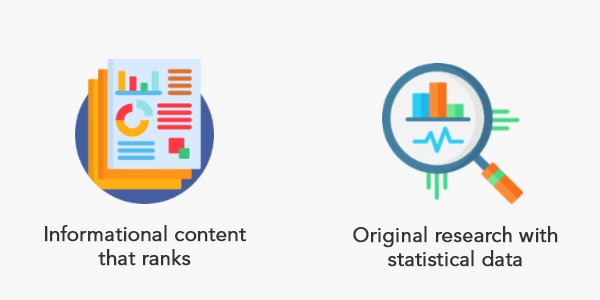
The two ways I’ve been able to do this is with:
1. Informational content that ranks
2. Original research with statistical data
People do try to find sources to link to when they write blogs and being visible in Google with good informational content absolutely can earn you links.
Add outreach into the mix and you’re sure to attract the quality links that Google loves.
Make It Easier to Save or Bookmark Your Content
Many people these days tend to save content for later. If you want your website’s rankings and traffic numbers to go up, it would be ideal if the content on your site is easy to save. You can add social sharing buttons or a Save for Later button to make this possible.

Include Infographics and Other Visual Elements
Visual elements help improve the user experience on your website while increasing engagement rates. Visual elements are easier to process and understand than text-based content. You can use infographics, charts, graphs, images, and videos to add visual elements to your content.

Just make sure you don’t overdo it as this can also have a negative effect on the user experience. Only use what’s necessary to help explain your point.
Publish Content on a Regular Basis
One of the worst things you can do is publish content on a sporadic basis. This will give your competitors time to figure out what you’re up to and then target it with their own content.
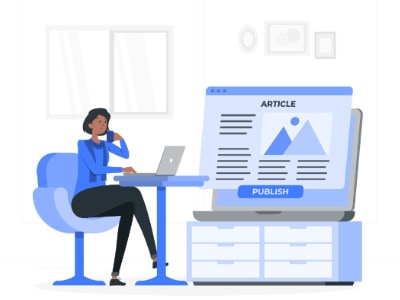
You should aim to publish content on a regular basis, ideally once or twice per week or more. This makes it more difficult for your competitors to compete with you and overtake you in the SERPs.
Promote Your Content
Once you’ve created content, don’t just sit back and wait for it to rank on its own. You need to promote it as much as possible. This includes sharing it on social media, emailing it to your subscribers, and even guest posting on other websites.

There are tools like Help A Reporter Out (HARO) that can help you find reporters who are looking for expert sources on their stories. Reach out to them with your content. This can help you get more exposure and attract more visitors to your website.
Optimize Your Metadata
When it comes to on-page SEO, you need to optimize your meta data properly. This includes things like optimizing the page title and description for relevant keywords that users are more likely to search for.

Remember that Google uses this information in order to determine how the content fits within the overall structure of a website, so make sure not to stuff keywords in there. Just use them naturally so that users and search engines can each understand what the page is all about.
Optimize Individual Pages for Higher Rankings
Another thing you need to do is make sure that your website’s pages are properly optimized for rankings. You need to make sure each of your web pages has a robust on-page SEO strategy. Some of the things you can do include having unique and descriptive link titles, using keywords naturally in the content, creating ALT tags for images, etc.
If you’re unsure about what type of optimization works best for your website’s specific niche then you can always refer to a professional SEO company like Webology.

We use correlational tools like Surfer SEO and Page Optimizer Pro to create precise on-page SEO roadmaps for individual pages based on competitor averages.
Build Quality Links
One of the most important factors that influence your website’s ranking is its link profile. You need to have links from high-quality websites if you want to rank higher than your competitors.

One way you can do this is by leveraging influencer marketing for your business. You can, for example, create a list of top influential bloggers in your niche and simply send them an email asking if they would be willing to share a post about your product or service.
In addition to this, you can also participate in link exchanges, run guest blogging campaigns, and even create roundup posts.
Fix Website Issues and Optimize Page Speed
Another thing you need to do is fix any technical issues with your website. Things like broken links, poorly optimized images, and slow page load times can seriously hurt your ranking in the SERPs.
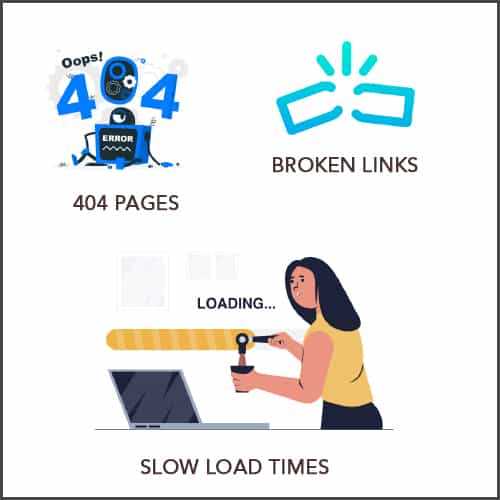
In order to optimize the speed of your website, you should implement a caching plugin and make sure that all images are optimized for web use. You can also check out Google’s PageSpeed Insights tool in order to get suggestions on how you can improve the performance of your site online.
Conclusion
SEO is a never-ending battle! However, with these tips, you’ll be able to give your website the edge it needs to rank higher than your competitors. Implement these tactics and watch your traffic grow in no-time.



